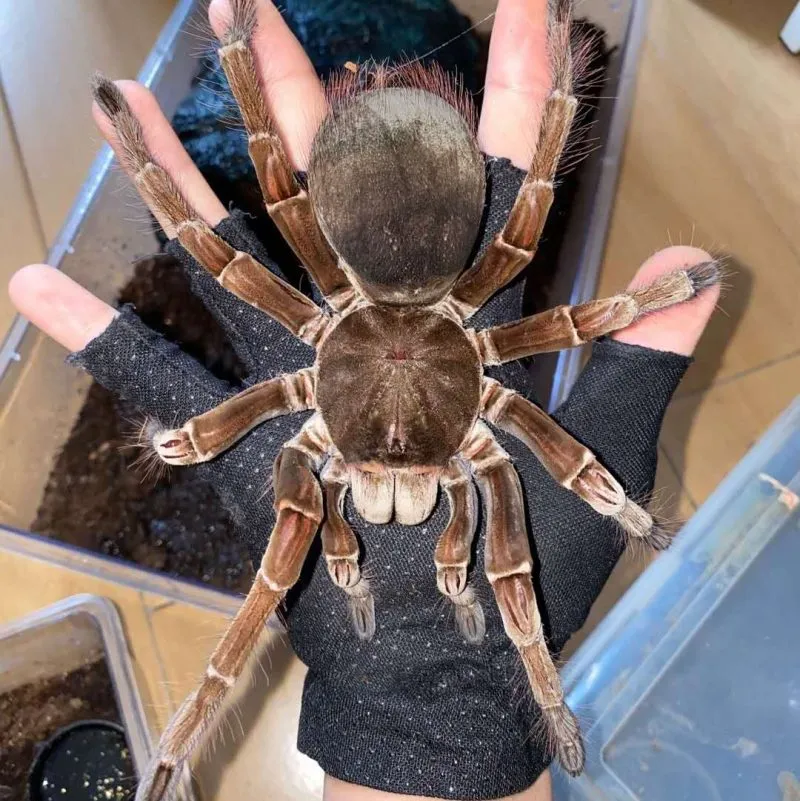Goliath Tarantula Facts Unveiled
The Goliath birdeater tarantula, scientifically known as Theraphosa blondi, is a truly remarkable creature. As the world’s largest spider by mass, it captures the imagination and, for some, the fear of many. This article delves into five fascinating facts about this impressive arachnid, exploring its physical characteristics, behavior, habitat, and more. Prepare to be amazed by the Goliath tarantula and gain a newfound appreciation for its place in the natural world. The Goliath tarantula is not just a spider it is a living legend, a testament to the diversity and wonder of life on Earth. From its imposing size to its unique adaptations, the Goliath tarantula is a subject of endless fascination for scientists, enthusiasts, and anyone curious about the natural world.
What is a Goliath Tarantula?
The Goliath birdeater is a species of tarantula native to the rainforests of northern South America. While the name ‘birdeater’ may sound alarming, it’s worth noting that this refers to their opportunistic diet rather than a consistent preference for birds. They primarily feed on insects, but they are also known to consume small vertebrates, including lizards, rodents, and yes, occasionally, small birds. Their enormous size and impressive fangs make them formidable predators within their ecosystem. The Goliath tarantula’s existence is a marvel of adaptation, showcasing its ability to survive and thrive in the complex environment of the rainforest. This spider is an essential part of the ecosystem.
Appearance and Size
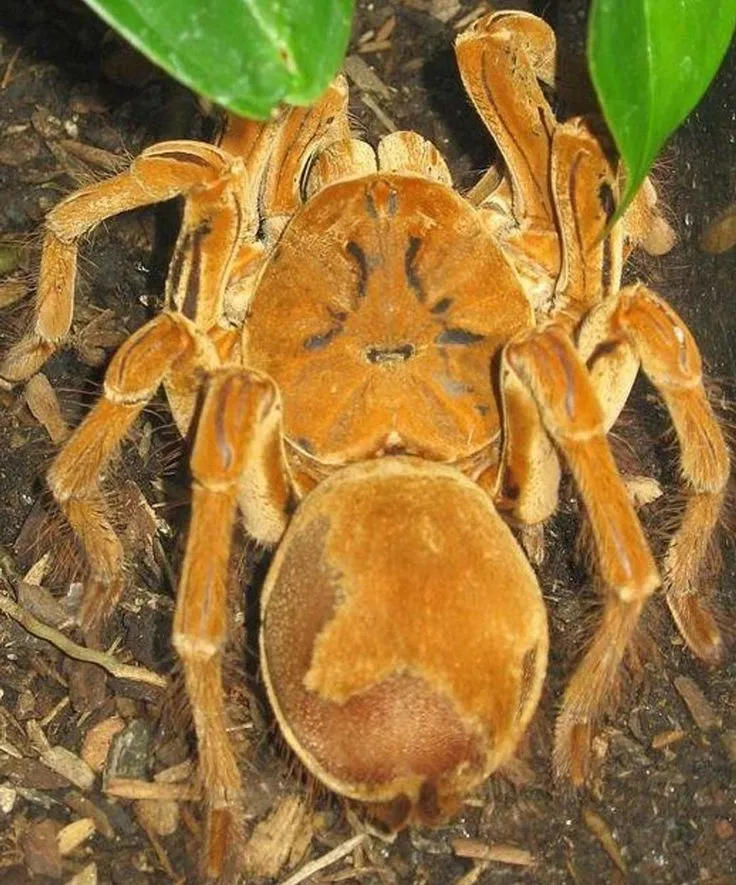
The Goliath tarantula truly lives up to its name. With a leg span that can reach up to 12 inches (30 cm) and a body length of over 4 inches (10 cm), it’s the largest spider on Earth by mass. Their bodies are covered in dense, reddish-brown hairs, and they have powerful chelicerae (fangs) that can be up to an inch long. The sheer size of this spider is awe-inspiring, and it’s a testament to the evolutionary pressures that have shaped its physical characteristics. The Goliath tarantula’s size gives it a significant advantage in hunting and defending itself from predators. They are truly magnificent and intimidating at the same time.
Where Do They Live?
Goliath tarantulas are primarily found in the rainforests of northern South America, including countries like Brazil, Venezuela, Guyana, Suriname, and French Guiana. They are terrestrial spiders, meaning they live on the ground, and they are typically found in burrows or beneath rocks and logs. These spiders prefer humid environments, which are essential for their survival and well-being. The warm, moist climate of the rainforest provides the ideal conditions for these impressive creatures to thrive. The Goliath tarantula’s distribution is an excellent reminder of the planet’s biodiversity.
Habitat and Environment
Their natural habitat is characterized by high humidity, dense vegetation, and a warm climate. They construct burrows in the ground, often near streams or other water sources, to maintain optimal humidity levels. The rainforest floor provides ample cover and a rich supply of prey. The environment plays a crucial role in the Goliath tarantula’s survival. The specific conditions help these animals thrive. The rich biodiversity of the rainforest is home to many other animals, making the Goliath tarantula a part of a larger intricate food web.
Diet and Feeding
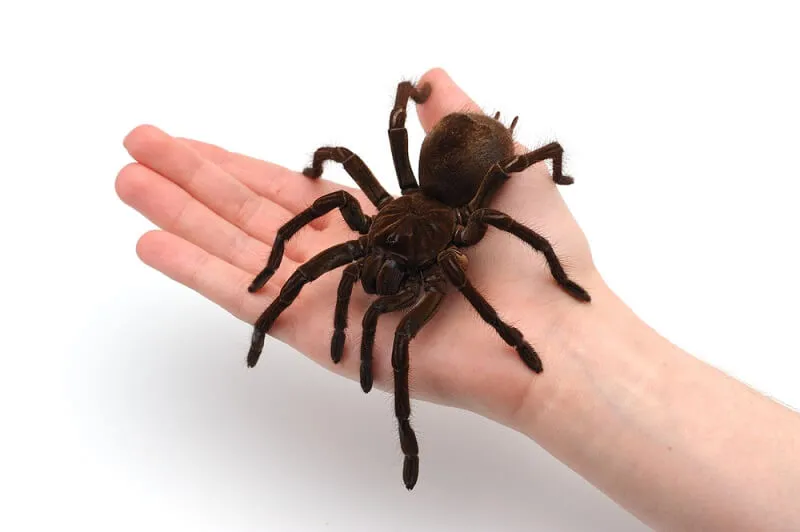
As mentioned, the Goliath tarantula is an opportunistic predator. Their diet primarily consists of insects, but they are also known to consume other arthropods and small vertebrates. They are sit-and-wait predators, ambushing their prey from their burrows or hidden locations. Their large size and powerful fangs enable them to subdue even relatively large prey. The Goliath tarantula’s feeding habits are a critical component of their survival, allowing them to obtain the necessary energy and nutrients to thrive.
What Do Goliath Tarantulas Eat?
Their diet in the wild includes a wide variety of insects such as crickets, beetles, and grasshoppers. They will also eat small mammals like mice or rats, amphibians like frogs, and reptiles. The Goliath tarantula is an apex predator within its environment, playing a vital role in keeping populations of other species in check. The variety of prey demonstrates their adaptability to various food sources.
The Goliath Tarantula’s Behavior
Goliath tarantulas are generally solitary creatures, only interacting with others during mating. They are nocturnal hunters, active primarily at night. They are known for their defensive behaviors, including flicking urticating hairs from their abdomen when threatened. This behavior can cause significant irritation to potential predators. They also possess large fangs and are capable of delivering a painful bite if they feel threatened. Understanding their behavior is crucial for both researchers and those who keep them as pets.
Defense Mechanisms
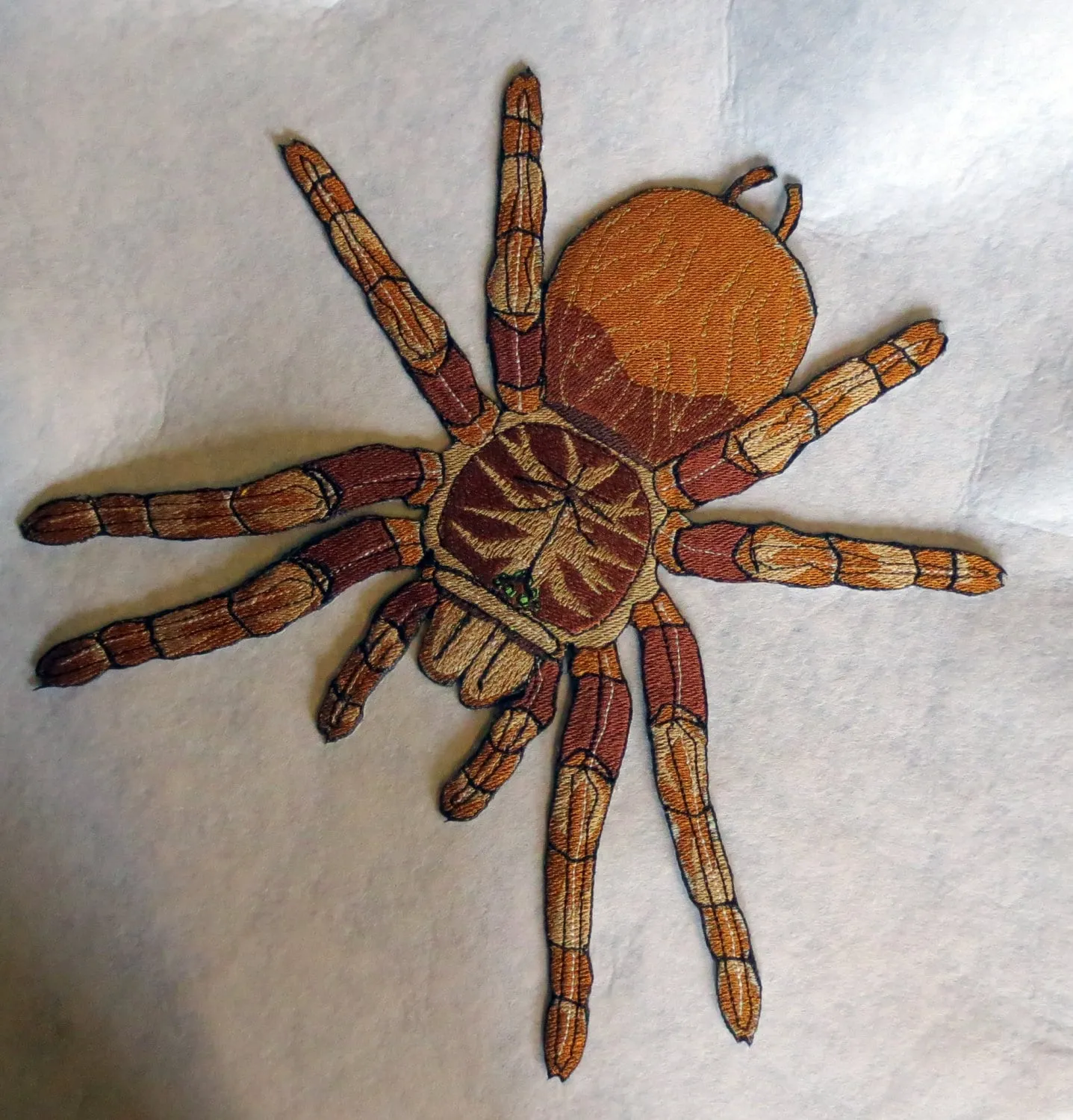
These spiders employ a combination of defense mechanisms. They have urticating hairs, which can cause skin irritation, and they are capable of delivering a painful bite. When threatened, they will often rear up in a defensive posture, displaying their fangs. The Goliath tarantula’s defenses are essential for their survival in the wild. The purpose of these behaviors is to deter predators and ensure the tarantula’s survival.
Are Goliath Tarantulas Venomous?
Yes, Goliath tarantulas are venomous, but their venom is not considered lethal to humans. The bite is painful, and the venom can cause localized swelling, muscle cramps, and other symptoms. However, the effects are generally not life-threatening. The effects of the bite can last for several hours or even a few days, but they are usually not severe. The venom is primarily used to subdue prey.
Do Goliath Tarantulas Make Good Pets?
Goliath tarantulas are kept as pets, but they are not suitable for everyone. They require specialized care, including a large enclosure, a controlled environment with high humidity, and a specific diet. They are not spiders that you can handle frequently, and their defensive behaviors can make them challenging to handle. Only experienced arachnid keepers should consider owning a Goliath tarantula. Taking good care of a Goliath tarantula requires knowledge, commitment, and resources.
Caring for a Goliath Tarantula

Caring for a Goliath tarantula involves creating a suitable habitat, providing proper nutrition, and handling them safely. It is a responsibility that shouldn’t be taken lightly. Understanding their needs is crucial for ensuring their well-being. Researching their needs before acquiring one is very important. Proper care helps maintain their health.
Creating the Right Habitat
The enclosure should be large, as these spiders can reach a significant size. It needs to include a substrate that allows them to burrow, such as a mix of peat moss, coconut fiber, and vermiculite. Maintaining high humidity and providing a water dish is also important. The habitat is an essential component in maintaining their health. Regular cleaning and upkeep of the enclosure are vital.
Feeding and Watering
They should be fed a diet of insects, such as crickets and roaches. The frequency of feeding depends on the spider’s size and age. Fresh water should always be available. Providing a varied and nutritious diet contributes to their overall health. Overfeeding must be avoided. Removing uneaten food is essential for preventing the growth of mold and bacteria.
Handling and Safety
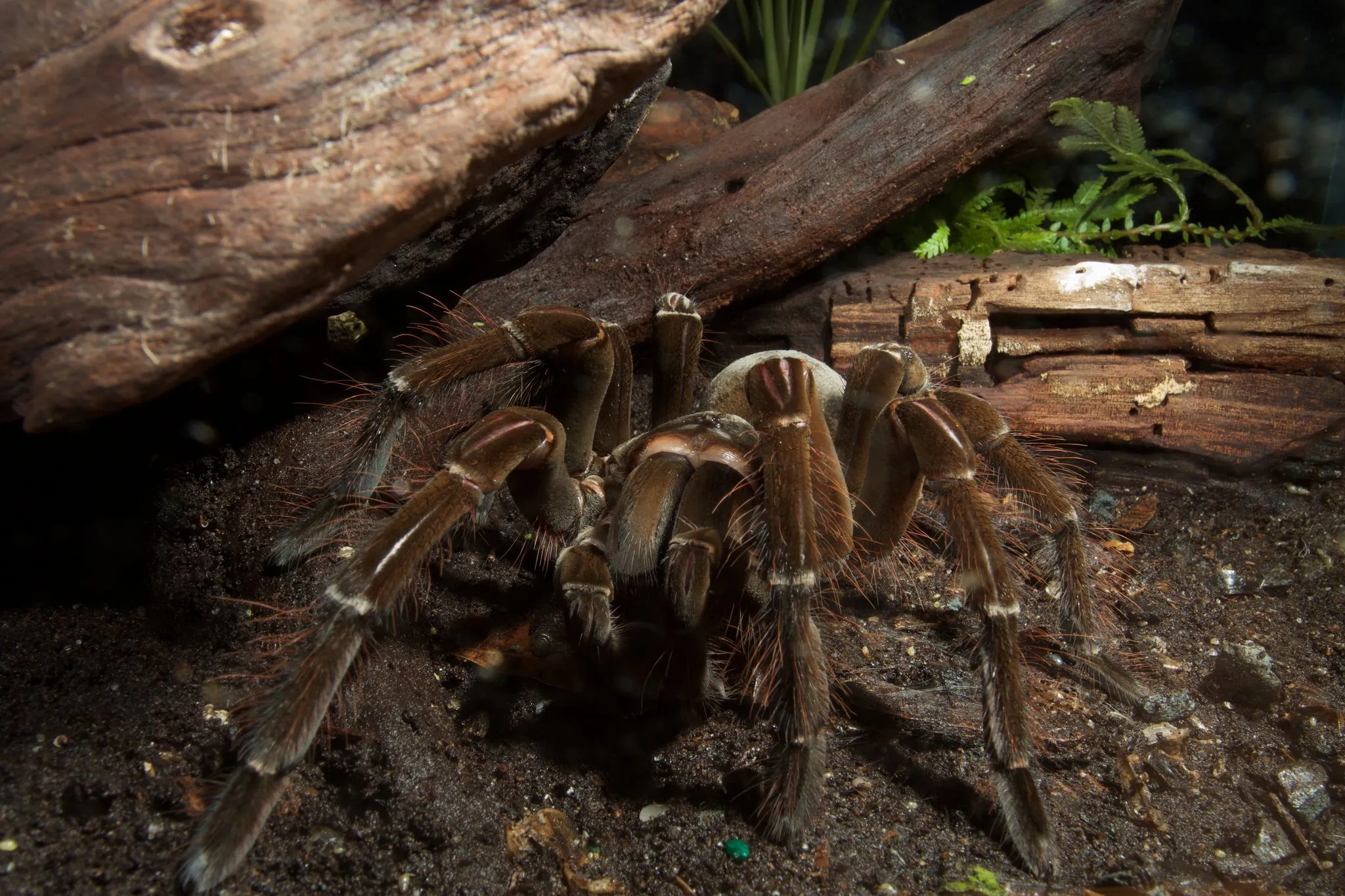
Handling should be kept to a minimum, as Goliath tarantulas can be defensive and may bite if they feel threatened. If handling is necessary, do so with extreme caution and consider wearing protective gloves. Always be aware of the spider’s posture and behavior. Knowing what to do is important to keep everyone safe, the spider and the keeper.
Goliath Tarantula’s Conservation Status
While not currently listed as endangered, Goliath tarantulas face threats due to habitat loss and the pet trade. Deforestation and habitat destruction are major concerns. The species is also collected for the pet trade. Protecting their natural habitat is essential for ensuring their long-term survival. Conservation efforts are needed to ensure the continued existence of this magnificent spider.
Threats to Goliath Tarantulas
The primary threats include habitat loss due to deforestation and the collection of specimens for the pet trade. The destruction of their rainforest habitat is a significant concern. The capture of Goliath tarantulas for the exotic pet trade also poses a threat. Efforts to protect their habitat and regulate the pet trade are essential for ensuring their survival. The long-term survival of the species depends on these factors.
